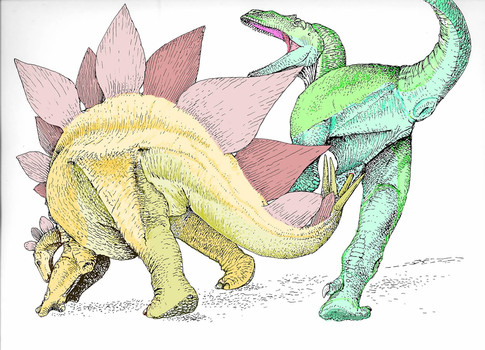The first known physical evidence that stegosaurs not only defended themselves with their tail spikes but were capable of killing a large carnivore was presented at the Oct. annual meeting of the Geological Society of America in Vancouver. Robert T. Bakker and colleagues from the Department of Paleontology at the Houston Museum of Natural Science and from the Morrison Natural History Museum in Morrison Colorado discovered the evidence in the Brushy Basin Member of the Morrison Formation in Wyoming. The loser of the fight was an allosaur.
The bones of the allosaur had a single dome shaped scar in the pubis. There was substantial evidence of infection at the wound site. The infection spread to the animal’s internal organs and resulted in the dinosaur’s eventual death.
The discovery is important because it shows that there was quite a lot of interaction between predatory carnivores and herbivores during the Jurassic Age. This is the first known fossil evidence that shows a stegosaur was capable of defeating an allosaur in combat. Unlike most depictions in film, the gentler herbivore was the victor.
Analysis of the structure of the stegosaurs’ tail indicates the key to combat victory. The animal’s tail was very flexible and extremely well muscled all the way to the end where the spikes were attached. There is no evidence that stegosaur tails had any locking joints. These facts indicate that the stegosaurs were agile fighters and not stodgy lumbering beasts like they are usually shown to be in films. The fossils show that the stegosaur would have had to twist its tail tip to be able to inflict the damage that killed a predatory adversary.















